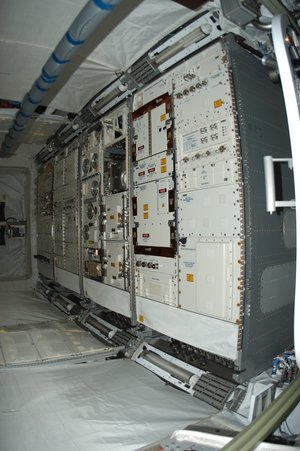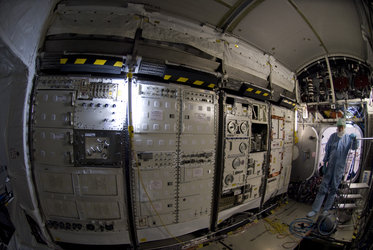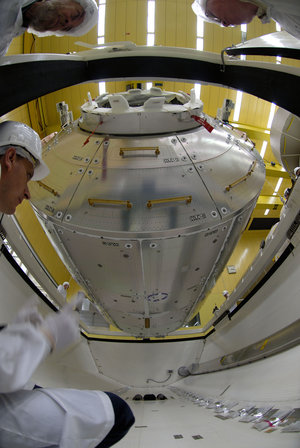

A lab with a view
A cylindrical hull stands out in this shot taken during the latest spacewalk for maintenance and science on the International Space Station. Several platforms grow from it like tentacles reaching out for direct access to the vacuum of space, or to an unobstructed view of Earth.
This engineering and scientific shiny marvel is the Columbus laboratory circling our planet at 28 800 km/h and 400 km above our heads.
On 11 February 2008, 17 years ago today, Columbus became ESA’s largest single contribution to the International Space Station and the first permanent European research facility in space
The 7 m long, 4.5 m wide module has since been used to run experiments on everything from cold plasma technology to 3D printing metals and to probing astronauts’ bodies and brains. Inside and out, it provides the microgravity environment and facilities for researchers to test technology and study phenomena that cannot be observed on Earth.
Research conducted on this versatile laboratory has the dual purpose of advancing human spaceflight capabilities and improving the quality of life on Earth. Studying the driving factors of bone loss in astronauts, for example, could help physicians treat patients suffering from osteoporosis.
Columbus houses as many disciplines as possible in a small volume, from astrobiology to metallurgy and psychology – over 250 experiments have been carried out in this remarkable facility, with many more to come.
Inside this workspace are 10 racks, each roughly the size of a phone booth. Each rack can host autonomous and independent laboratories, complete with power and cooling systems. Researchers on Earth can control and monitor experiments in the European Columbus laboratory by relaying commands and experiment data directly from their workplaces.
The Columbus Control Centre in Oberpfaffenhofen, near Munich, Germany, is the direct link to European experiments and astronauts in orbit.
The next Europeans to visit the lab will be ESA project astronaut Sławosz Uznański-Wiśniewski in 2025, while ESA astronauts Sophie Adenot and Raphaël Liégeois will travel to the Space Station in 2026.
Take a virtual 360-degree tour of the module.





